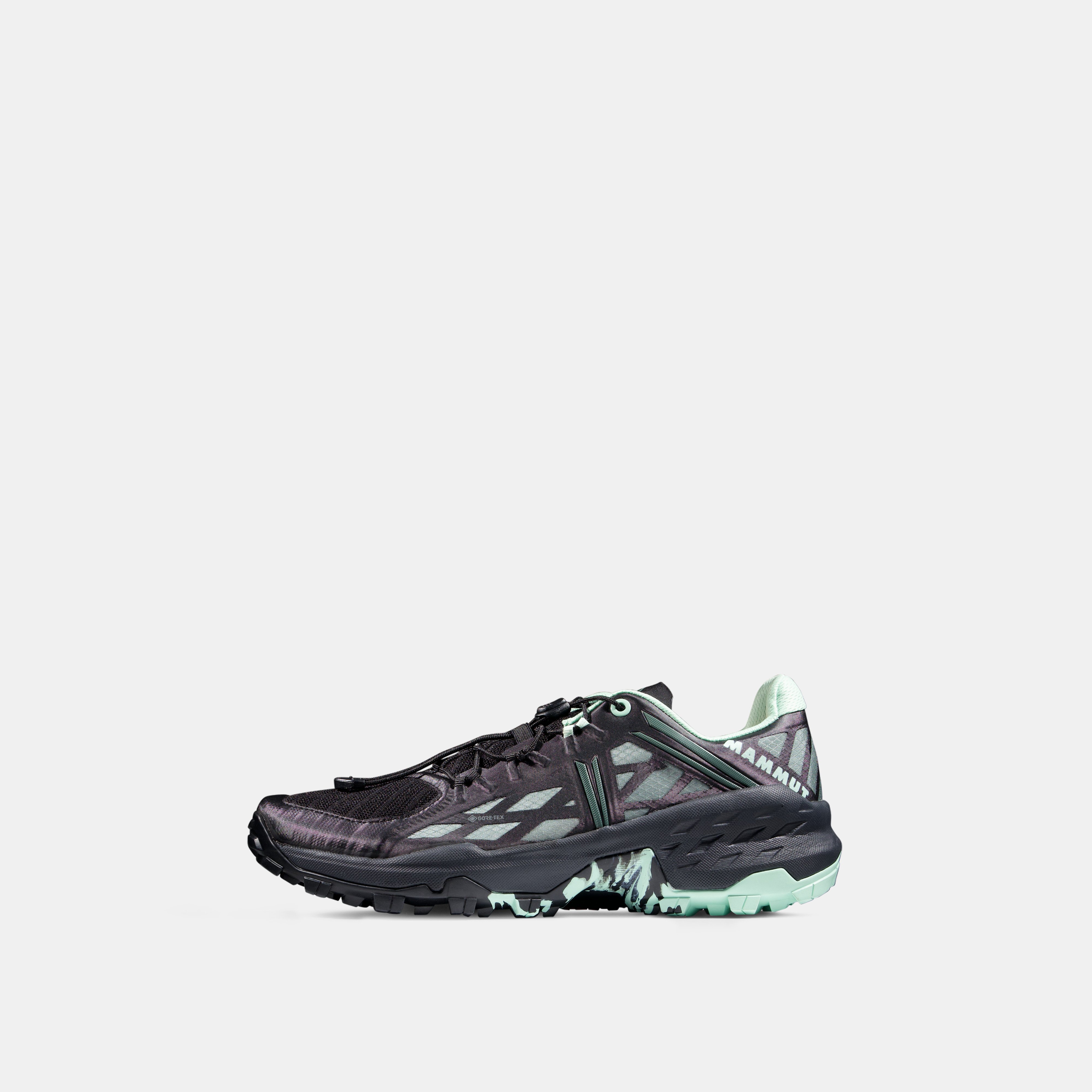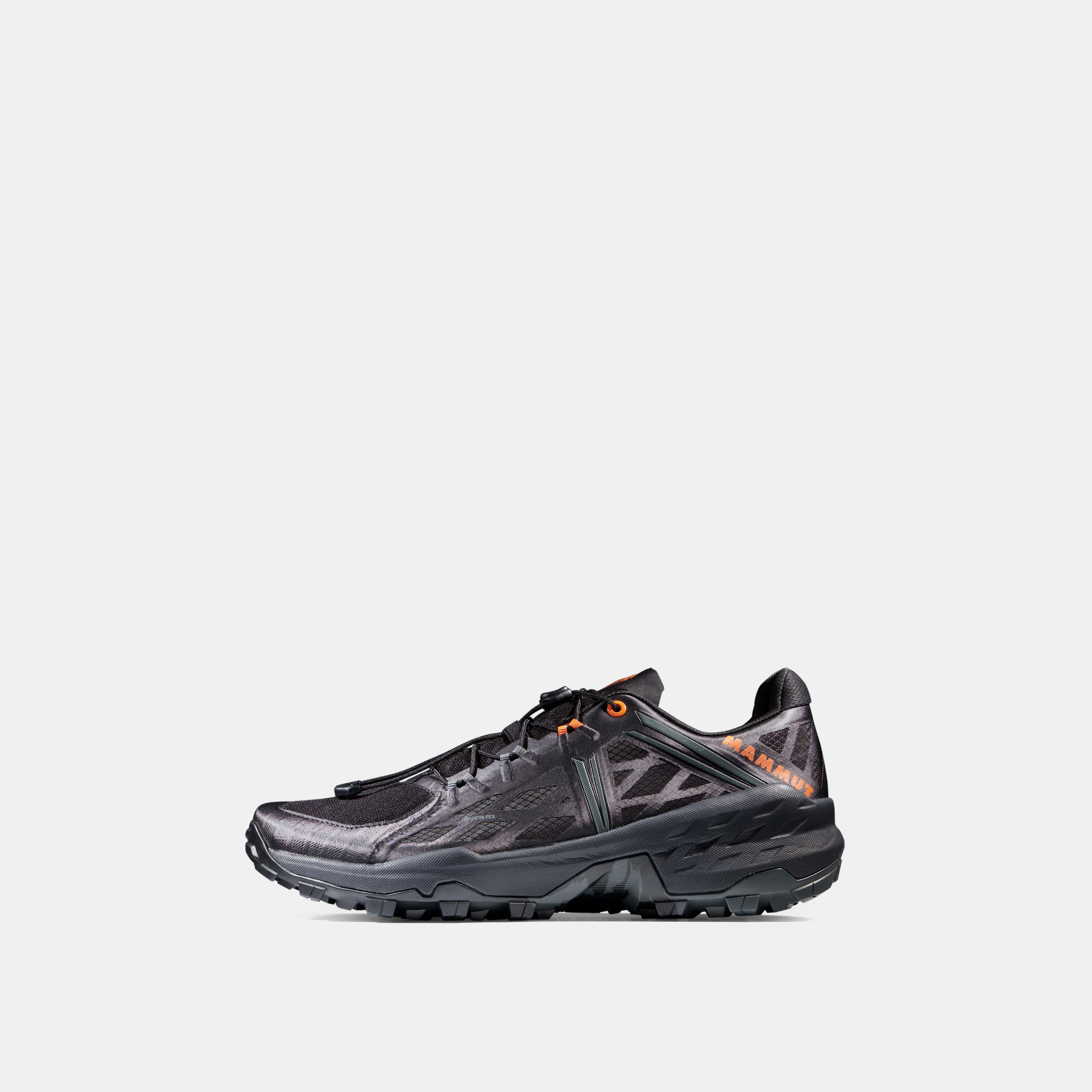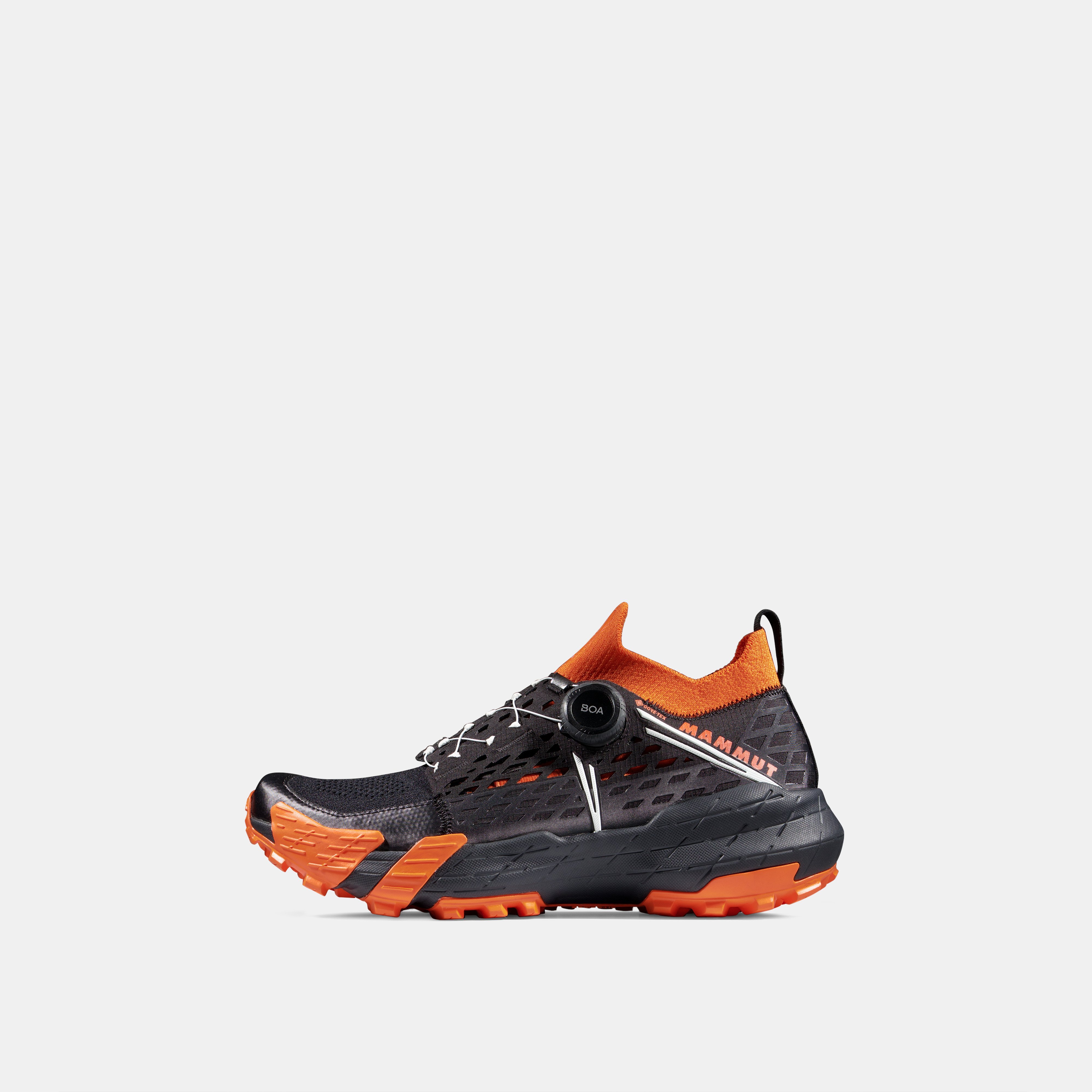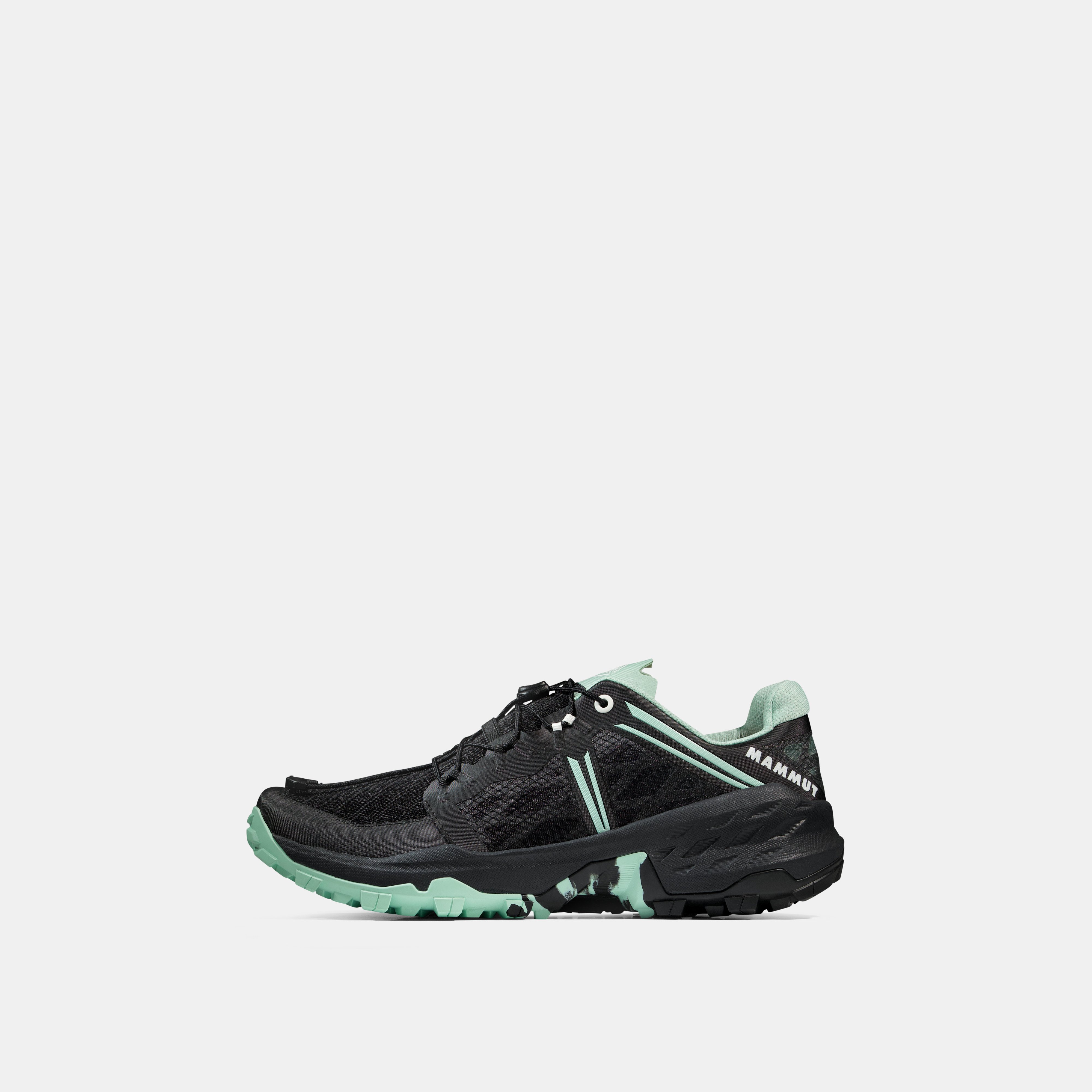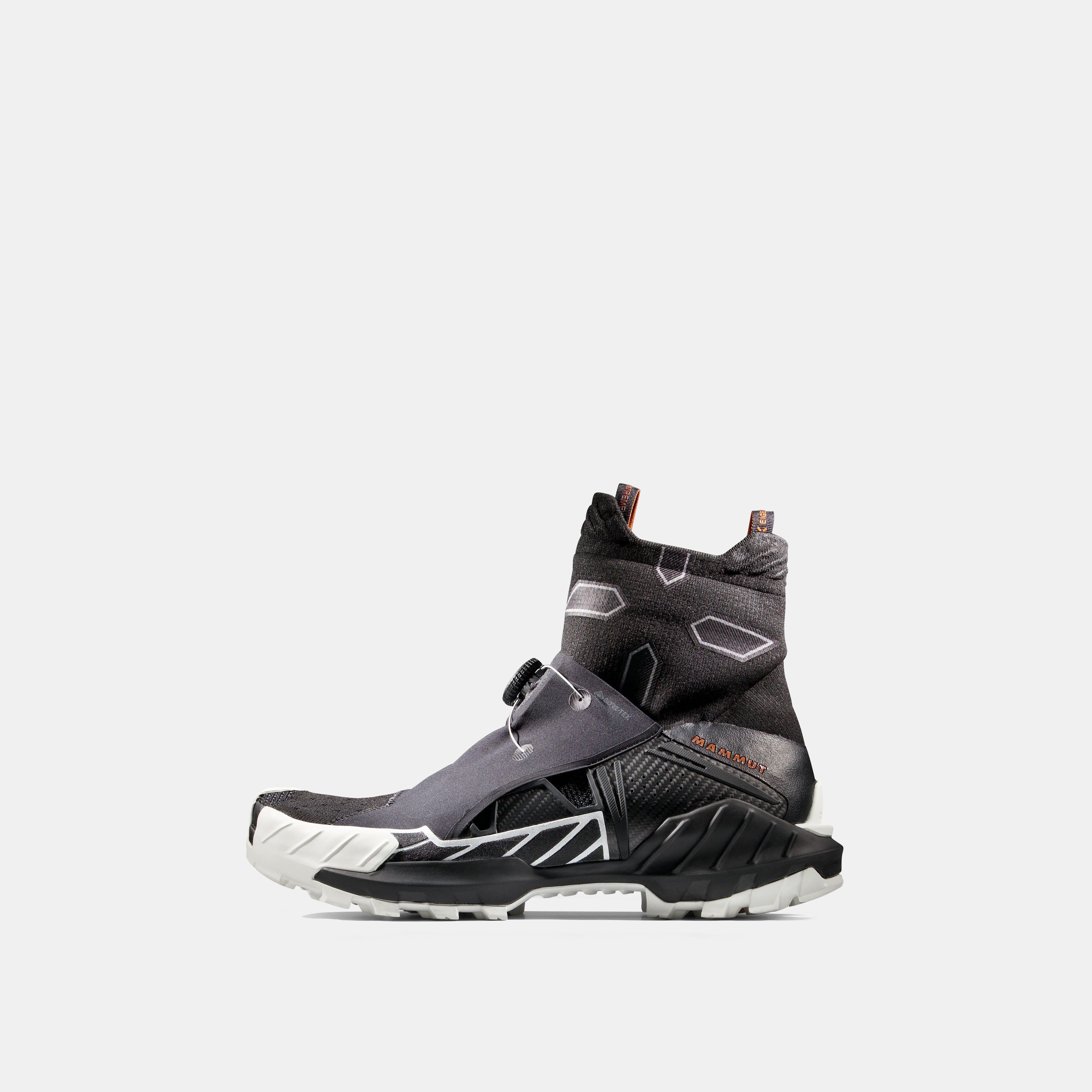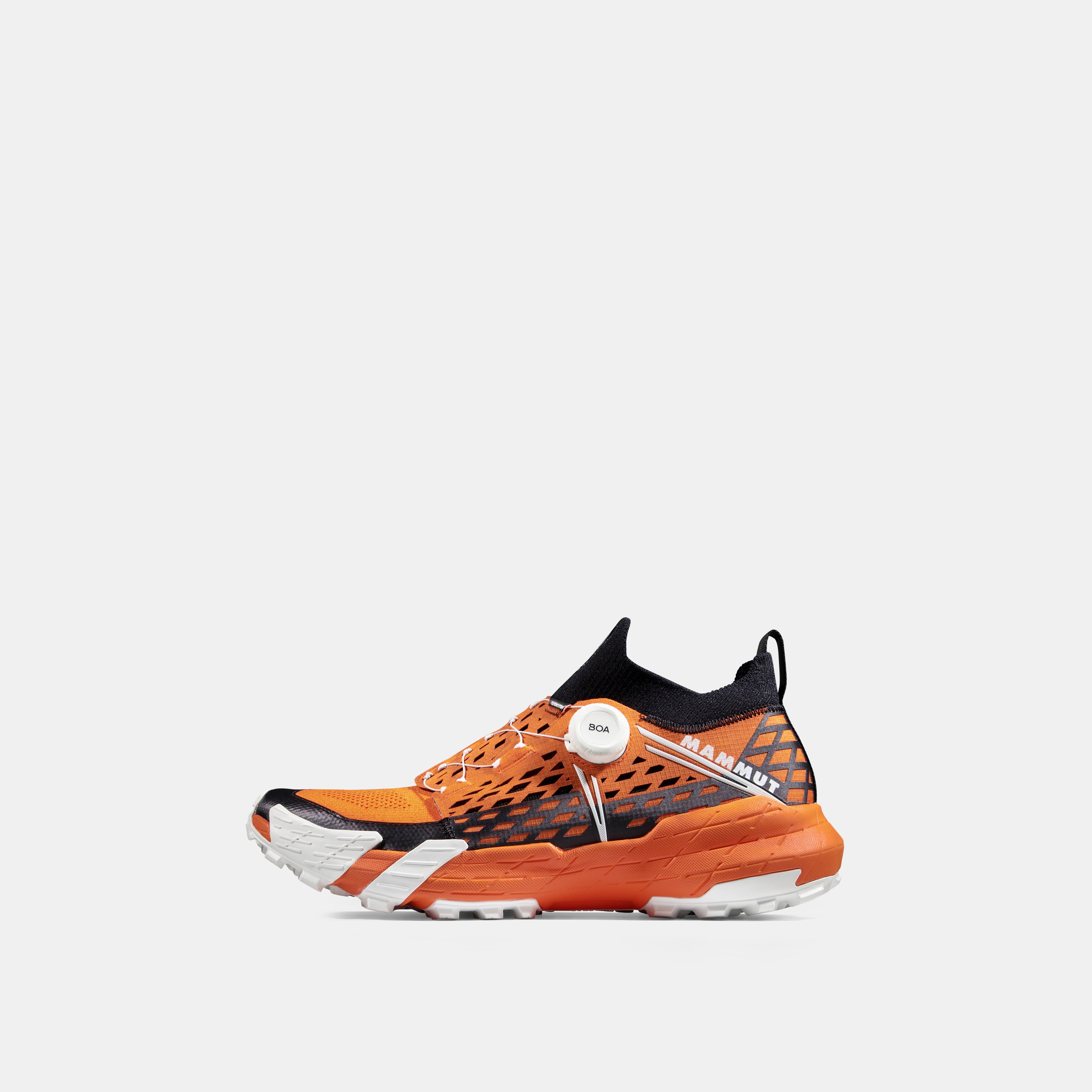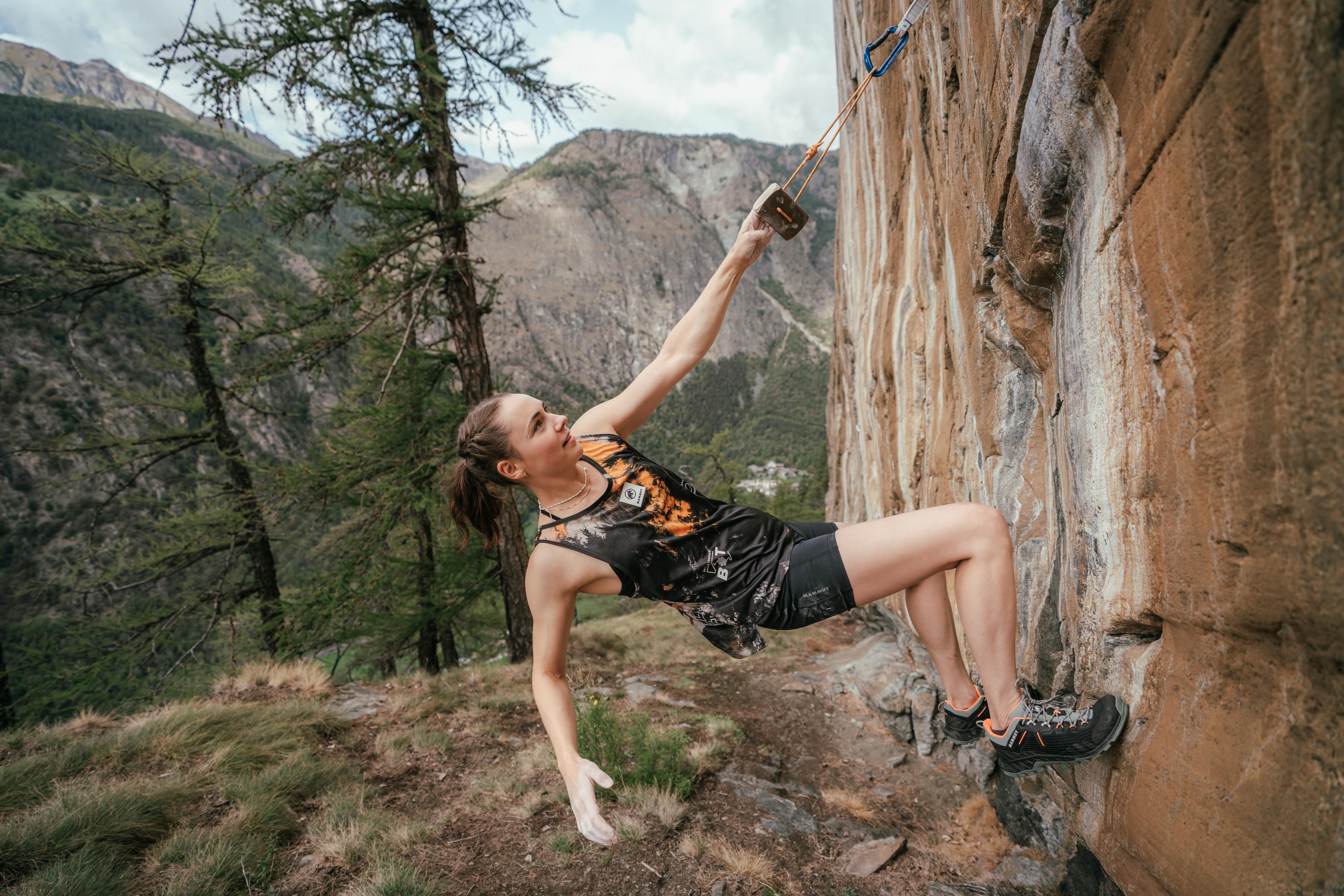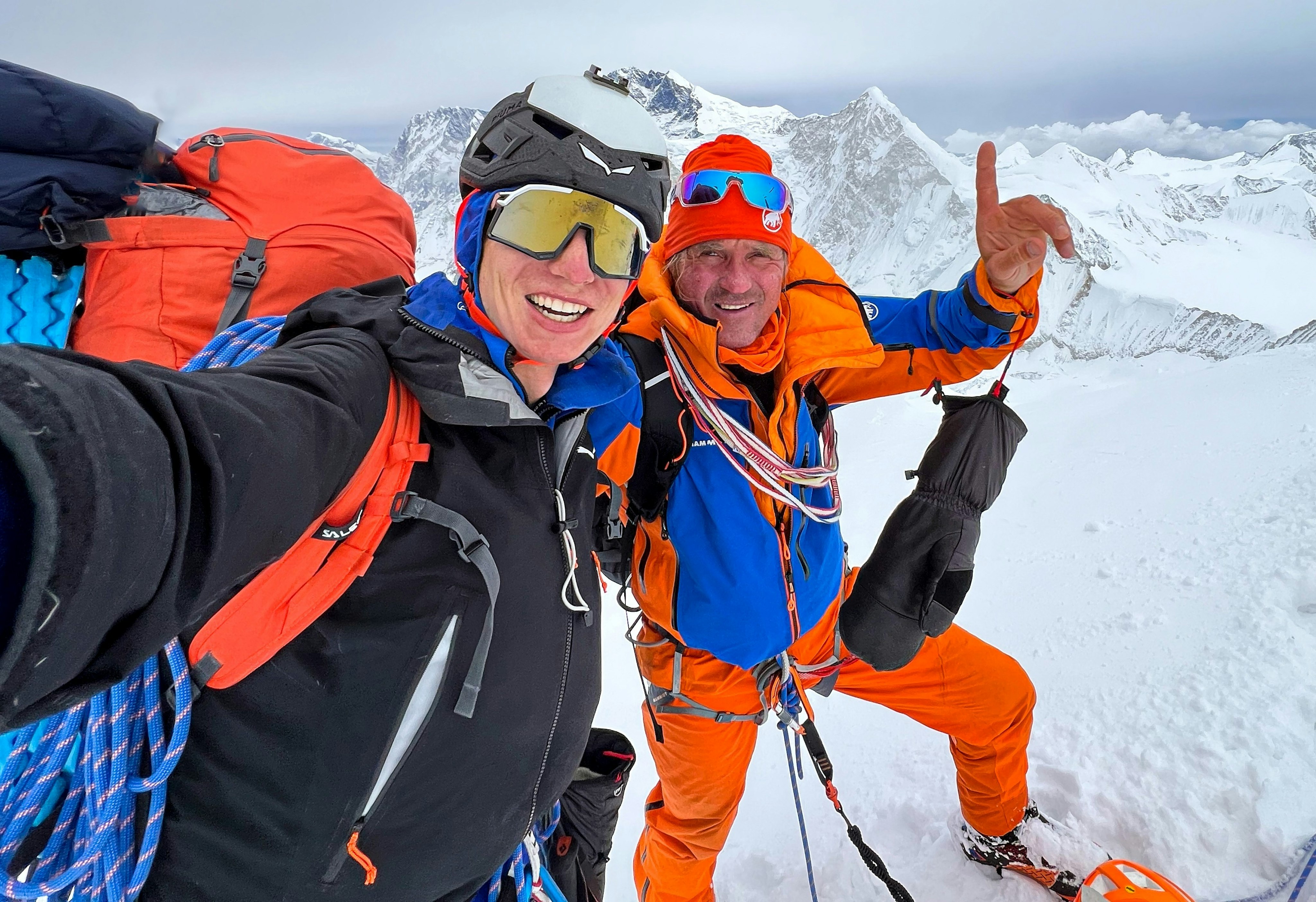How to Choose Trail Running Shoes – A Buyer's Guide
03/2024
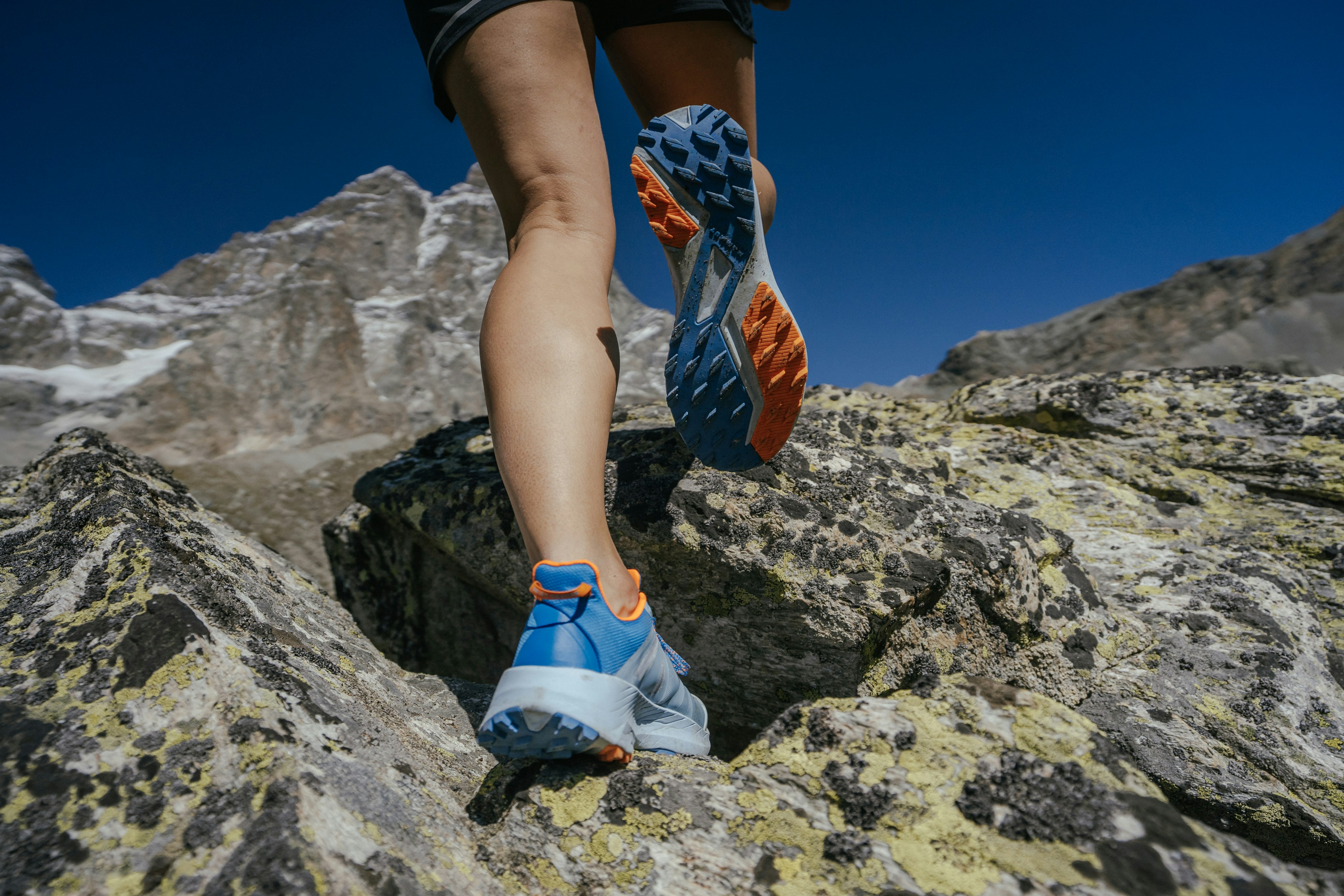
Are you itching to explore the unbeaten paths of the great outdoors and discover stunning natural scenery? One thing you’ll definitely need: the right pair of shoes. We firmly believe that conquering any trail is challenging enough, so we’ve put together our handy buyer’s guide to make sure your way to finding the perfect pair of trail running shoes is a walk in the park – guaranteed!
Before we dive straight into the details, here’s a quick overview of the key features to watch out for when buying trail running shoes:
Sturdy and durable materials: Trail running shoes should keep your feet dry and mud-free when out and about.
Special tread for maximum traction: To ensure the best possible grip on slippery or uneven terrain, the outsoles of trail running shoes are equipped with a biting tread and long lugs. For harder, dryer terrain we recommend shoes with shorter lugs.
Perfect fit and stability: A great fit as well as extra reinforcements at the heel and on the outsole offer you all the grip and protection you need, especially on uneven trails – or when you quickly need to change direction.
The right cushioning to match your chosen running distance and terrain: Depending on the running distance and terrain, your shoes should offer the exactly right amount of cushioning to ensure maximum comfort and protection for your joints.
What are trail running shoes, and what makes them special?
Let’s start with the basics: What exactly are trail running shoes? In fact, they’re not just simple sports shoes, but offer a host of brilliant features which have been specially developed to safely carry you across the wildest and most challenging terrain – and to cater to the unique demands of trail running. Unlike your regular pair of casual shoes which are designed for smooth and even surfaces, trail running shoes are the ideal choice to navigate uneven and often slippery, unpredictable terrain.
The material – protection from water, mud and rocks
Trail running shoes have to withstand a veritable onslaught of things: sharp rocks, mud, roots and whatever else you may happen to come across when you’re exploring the great outdoors. The sturdy mesh fabric with added reinforcement in the areas that need it the most not only makes your shoes last longer, they also ensure your feet get all the air they need. Many trail running shoes are also fitted with water-repellent or waterproof material like high-quality GORE-TEX membrane . So even when it’s wet outside or you’re hopping around between creeks and puddles, your feet are sure to stay dry. However, bear in mind that your shoes are bound to be a little bit stiffer because of that extra layer, so it’s important to know in what conditions you’ll be moving when choosing your pair.
The outsole – sturdy and durable for the best possible grip
The outsole of trail running shoes is the all-determining factor for the amount of grip you’ll have. It needs to be sturdy and durable to ensure comfort, safety and performance on any kind of terrain.
Construction of the outsole
The outsole of trail running shoes is made of sturdy, non-slip rubber to offer good traction and the best possible protection against wear and tear. At Mammut you’ll also find designs with Vibram Megagrip outsole for that extra bit of grip on particularly wet and slippery terrain. Plus, your shoes will be even lighter thanks to the added Litebase technology. Between the outsole and upper material, a lightweight and flexible midsole made of EVA (Ethylene Vinyl Acetate) provides perfect cushioning to soften the impact of your feet on the ground.
The thickness and firmness of the midsole are determined by the shoe’s design and intended use: Trail running shoes for long runs or runs on harder surfaces usually have a thicker and softer midsole to give you that extra bit of cushioning. Shoes for shorter runs or runs on softer terrain generally have a thinner, firmer midsole to give you a better connection to the ground.
Tread and lugs
Trail running shoes usually have a biting tread with long lugs to give you maximum traction on mud or wet grass and leaves. Think about it like having a pair of claws that digs into the ground to help you safely climb the steepest of slopes – all without the extra strain on your body. If you’re mostly running on dryer and harder ground like rubble, coarse gravel or rocky surfaces, shoes with a less aggressive tread and shorter lugs are going to be your best friend. As they have a much bigger area connecting with the ground, they’ll give you added stability.
Stability & fit – strong hold, maximum protection
Trail running is known for its literal ups and downs and sometimes quite treacherous stretches. That’s where your shoes’ stability comes in. They offer you all the support you need so you can stay on track – even on uneven terrain. A well constructed outsole with reinforced heel and sole caps ensures your feet have a firm hold, thus reducing the risk of rolling your ankle and other injuries. A tight and secure fit ensures your foot is stabilized while moving quickly, as well as on challenging terrain. The way you tie your laces is equally important when it comes to the perfect fit. A great alternative to classic lacing is the innovative BOA® Fit System. It consists of a micro adjustable wheel connected to a strong, yet lightweight cord. Simply adjusting the wheel will evenly tighten the cord, making it easy to quickly and precisely adjust the fit to suit your needs – even on the go. But there’s more: As the pressure is evenly distributed across your foot, you can safely say goodbye to pressure marks and rubbing.
Flexibility – unrestricted movement, your way
While stability is important, you’ll also need sufficient flexibility to move freely and without restrictions. Trail running shoes are specifically designed to complement your movement. They’re not as rigid as hiking boots , thus offering a good amount of flexibility which allows your foot to naturally roll over and adjust to uneven terrain.
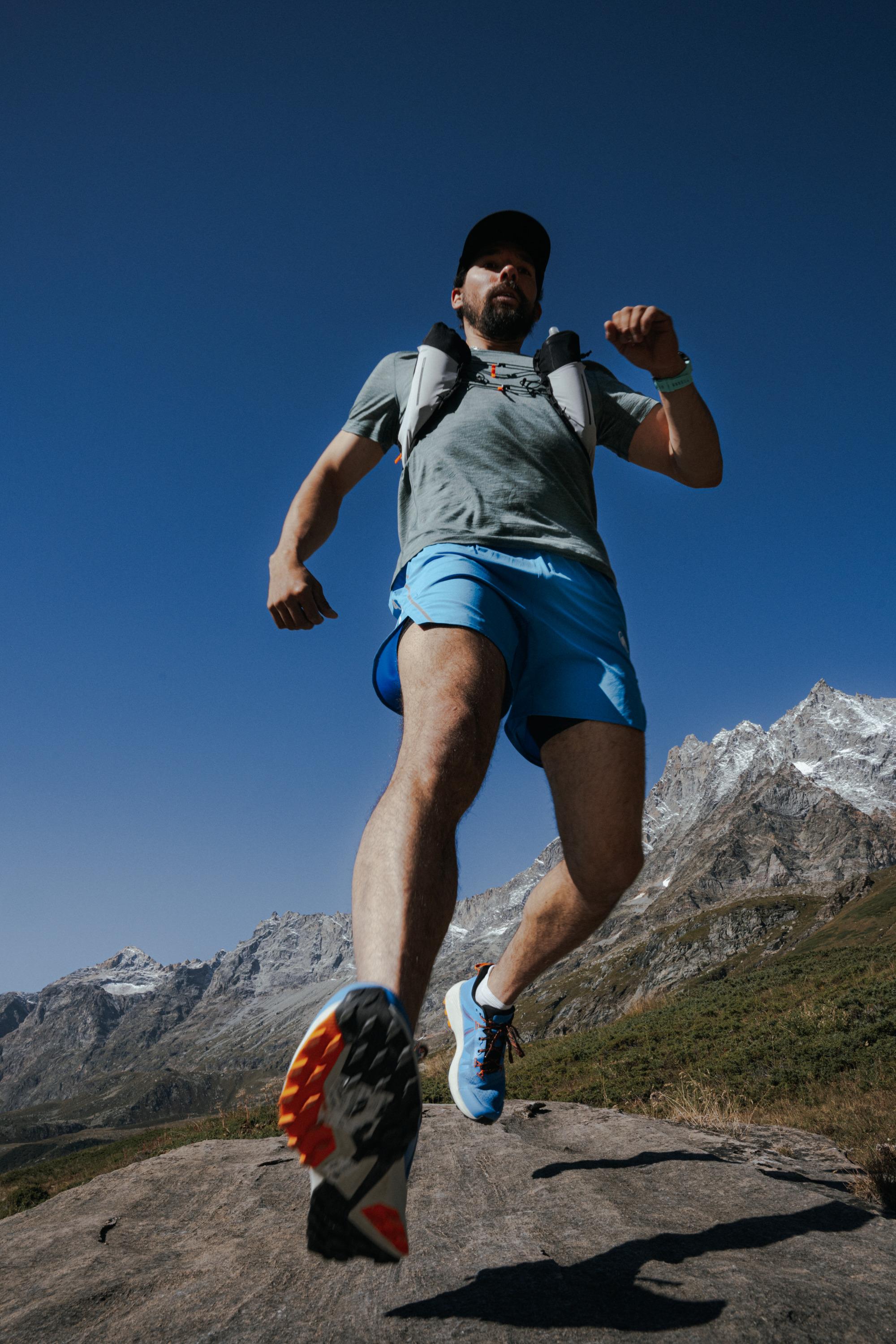
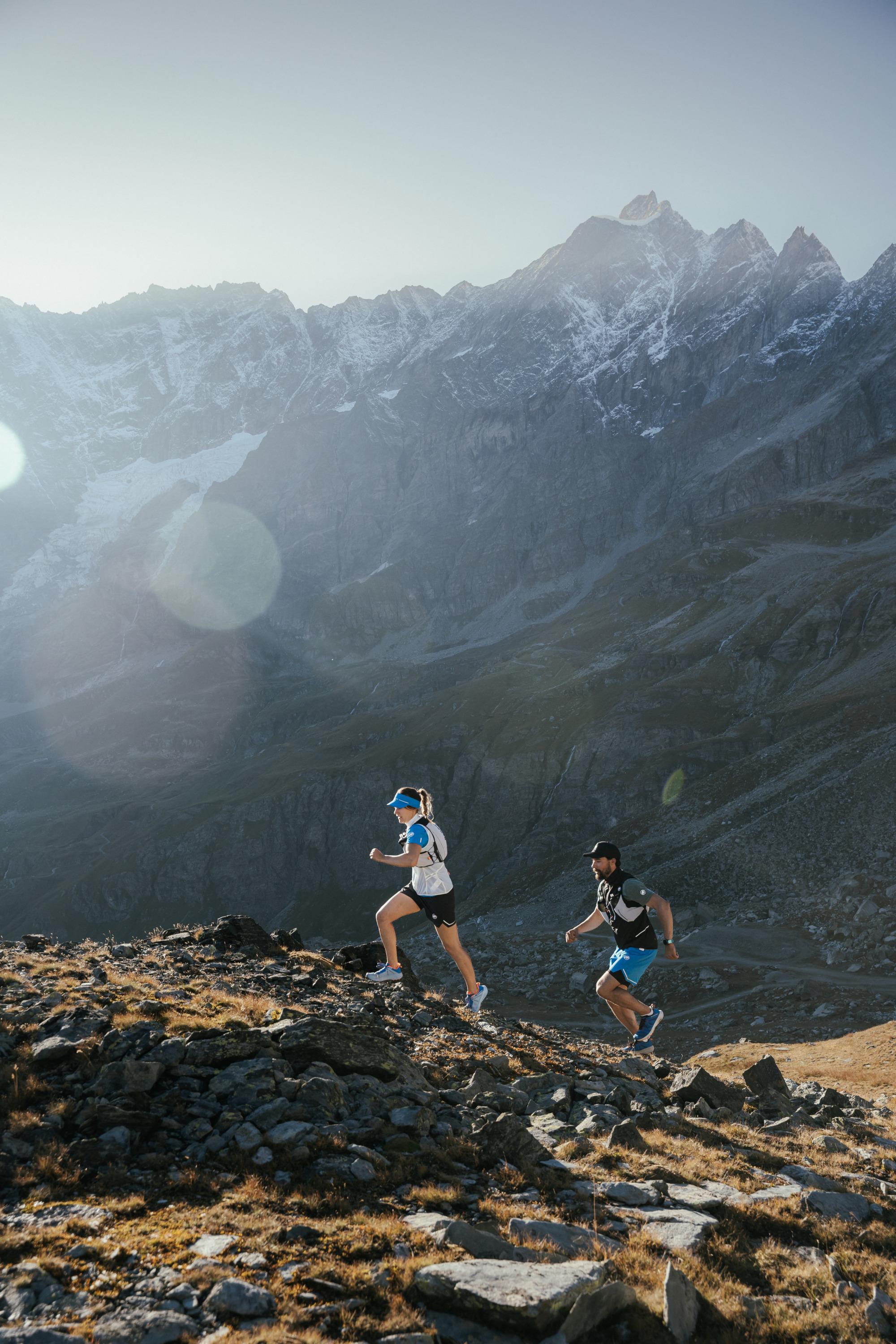
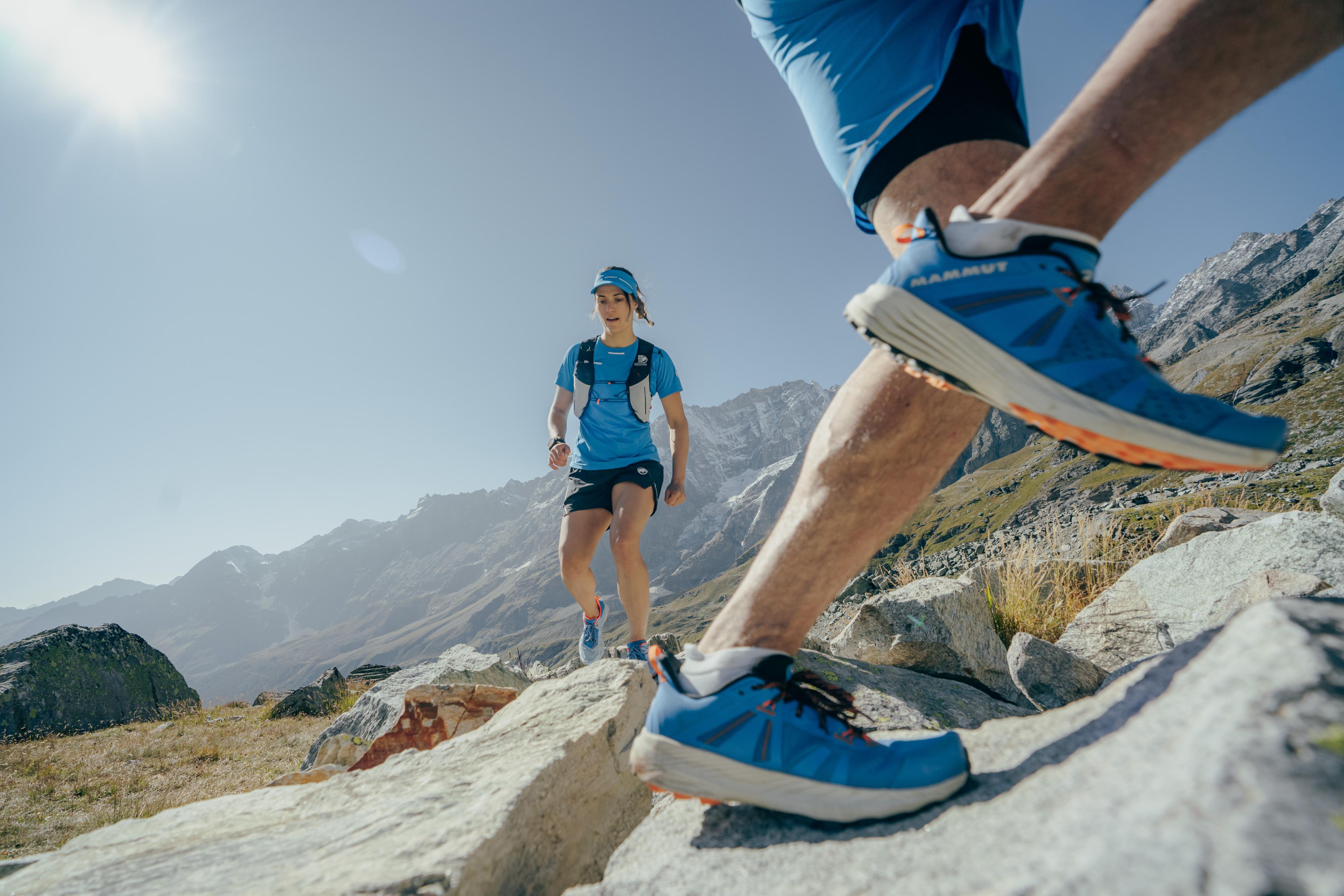
How to find the perfect trail running shoes
First things first: Trail running shoes need to match your individual running style. Think of it like picking the perfect playlist for your workout. At Mammut you’ll find a wide range of women's trail running shoes and men's trail running shoes . Below, we’ve summed up the key features to watch out for when buying a new pair:
Know your trail
Every trail is different. Whether you’re more likely to conquer rocky mountain paths or softer trails across the woods, the type of trail running you do should determine your shoe choice:
1. Cross country
Cross country runs usually take you along soft, uneven and sometimes muddy trails. Accordingly, shoes that offer good traction and stability are the perfect choice for this type of activity. They should have a pronounced tread and longer lugs to provide optimum traction on slippery terrain, while simultaneously offering good cushioning to absorb the impact caused by running on an uneven surface.
2. Mountain running
Mountain runs are all about running uphill, usually along stony and rocky trails. Here, lightweight and sturdy shoes with a rubber toe cap are the ideal choice. They should keep your feet firmly in place, and at the same time offer protection against sharp rocks. Good cushioning is key to ease the strain on your joints on a mountain run.
3. Skyrunning
If you’re skyrunning, you’ll be navigating alpine surroundings at dizzying heights of upwards of 2,000 meters above sea level. To cope with these demands, your trail running shoes should have protective rubber toe caps and rubber edges to provide maximum cushioning and protection. They should be sturdy so you can stand firm on rocky and even dangerous terrain, yet should also offer the right amount of flexibility so you can move quickly whenever you need to.
4. Ultra Trail
Ultra Trails are all about long distances and usually take place over the course of a couple of hours, sometimes even days. Comfort and endurance are key here. That’s why your shoes not only need next-level cushioning to make those long stretches as easy on your body as possible, but also should be breathable to keep your feet dry and comfortable throughout.
5. Speed Hiking
Speed hiking is a fast-paced, more strenuous form of hiking . For this type of activity, your shoes should be lightweight and flexible so you can move quickly. At the same time, good cushioning is key to ease the strain on your joints when you’re running long distance. Our favorite: The Eiger Speed BOA® High GTX trail running shoe . With its Vibram Megagrip outsole, BOA® Fit System and integrated gaiter you’ve got everything you need to hit a new personal best on your way to the summit. You can also use it with semi-automatic crampons and rocker levers for extra security when navigating challenging spots on glaciers. Just ask our speedy mountaineers Nico Hojac and Adrian Zurbrügg, who set a new speed record climbing Eiger, Mönch and Jungfrau with their Eiger Speed shoes.
The right size and fit
The right size and fit of your trail running shoes are the all-determining factors for a fun and safe running experience. To make finding the perfect shoe as easy as possible, we’ve put together a dedicated checklist with all the key points:
Room for your toes: Make sure your toes have enough room when trying on shoes. As a general rule, it’s best to ensure that there’s roughly a thumb’s width of space between your longest toe and the tip of your shoe. When mountain running, your toes generally have a tendency to slide forward. If there isn't enough space, there’s a good chance your toes will get squished against the toecap, resulting in bruises or even painful nail injuries.
A tight, yet comfortable fit: Your shoes should fit tightly enough to prevent your foot from sliding around, but not too tight so they squish your feet or cause blisters. The fit around the ankle and heel is especially important. Your foot should be firmly held in place on all sides, and there should be no rubbing or pinching.
Keep your eye on the width: It’s not just the length that matters, the width of the shoe is equally important to ensure maximum comfort. If the shoe’s too tight, your feet may get numb or develop blisters. If the shoe’s too wide, you won’t have the required stability.
Try on shoes in the afternoon: Our feet tend to swell up during the day, particularly when you’re walking or standing a lot. So when you’re trying on shoes, it’s best to do it in the afternoon when your feet will most likely be slightly bigger than usual. This will give you a much better idea of the actual size of your feet when you go running.
Wear running socks: When trying on shoes, make sure you’re wearing the kind of socks you’d be wearing when going for a run. Running socks are often thicker than regular socks, meaning they will have a significant influence on how well your shoes fit.
Simulate your running moves: Don’t just stand still when trying on running shoes. Run around the store for a bit and carry out typical movements to see how the shoe feels. Some stores even have designated running areas or treadmills so you can put your new gear straight to the test.
The perfect cushioning
Depending on the distance and the kind of surface you’re running on, the right cushioning is key. If you’ve got a long run planned, particularly on a hard surface, you’ll need plenty of cushioning to ease the strain on your joints. If you’re only going to be covering a short distance, or running on softer ground, you won’t need as much cushioning so your feet can better connect to the surface. And on that note: Time to have a quick chat about “pronation” and “heel drop”:
Trail running shoes and pronation: What to watch out for
Pronation is the professional term to describe the natural movement of your foot while running. Specifically, the way your foot turns inwards. Whether you move your foot neutrally, over pronate your foot (i.e. turn it inwards too much) or supinate your foot (i.e. turn it inwards to a lesser extent than usual): There’s a perfect shoe for every foot. You’re the neutral type? Then you best pick a well balanced shoe model. You’ve got a tendency to over pronate? Stability is the key feature to look out for. You’re more of a “Supinator”? Cushioning is your best friend. There’s probably one question on your mind right now: How do you know what type you are? To find out, you can get a personal consultation at a specialized store and keep an eye on the wear-and-tear pattern of your old shoe. The most important thing though: Listen to your gut. The right shoe won’t just feel really good on your feet, but will also complement your natural movement when running.
What is a heel lever?
When it comes to trail running shoes, the heel lever refers to the height difference between a shoe’s heel and forefoot. This measurement is hugely important, as it has a massive influence on running dynamics and the pressure on your legs. Trail running shoes with a low heel lever measuring between 0 and 4 millimeters allow your natural running technique to shine. They are the perfect choice for runners who value a minimalist feel and frequently explore a huge variety of trails. On the other hand, shoes with a higher threshold between 8 and 12 millimeters make for enhanced cushioning in the heel area, giving you an extra level of comfort on long runs, particularly on uneven terrain. A heel lever between 4 and 8 millimeters strikes a great balance between natural running technique and additional cushioning. On top of supporting the natural rolling movement of your foot, particularly in the forefoot area, it boosts muscle activation and at the same time provides cushioning in the heel area for slightly longer runs.
Breathable vs waterproof
Here, you need to figure out what’s best for your own personal requirements: Do you need shoes that are breathable, or is ist important to keep your feet dry at all times? Waterproof shoes are great when it’s wet outside, but your feet might get a little too sweaty in hot temperatures. Breathable shoes are perfect for dry and warm weather conditions. So make sure you know in what climate you’re running most frequently.
Durability – made for many adventures
When it comes to trail running shoes, a long lifespan is not a luxury, but a definite must. You’re not just pushing yourself to the limit: Your shoes are put under a lot of strain, too. So it’s important to invest in a sturdy, high-quality pair. Great shoes will last a long time, ensuring comfort and safety all the way. At Mammut, we’ve got you covered – proven quality and exceptional workmanship are what we focus on.
Tip: Even the highest-quality shoes will eventually start showing traces when you use them a lot. However, given the right care, you’ll be able to enjoy their company for many years to come.
Trail Running Shoes
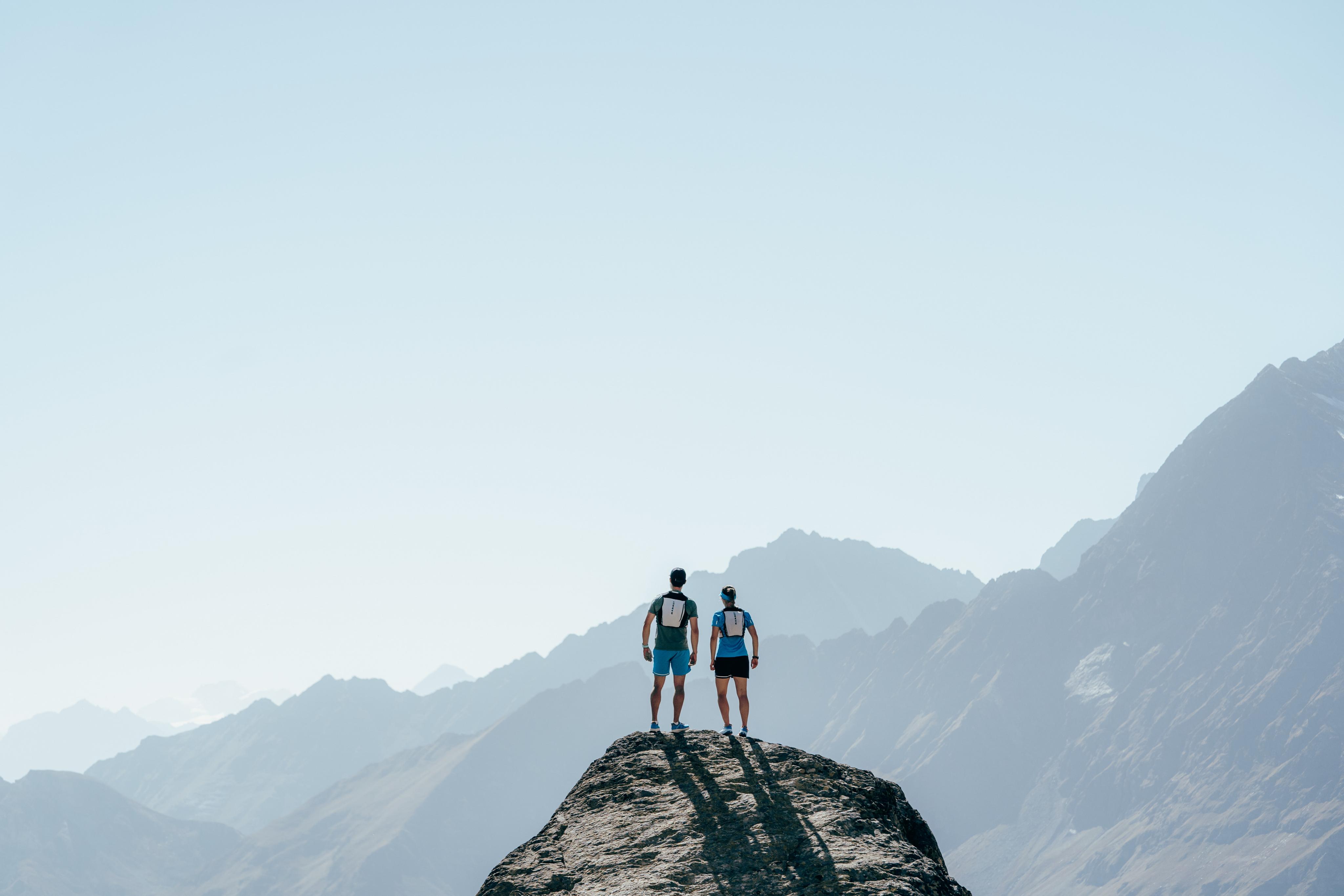
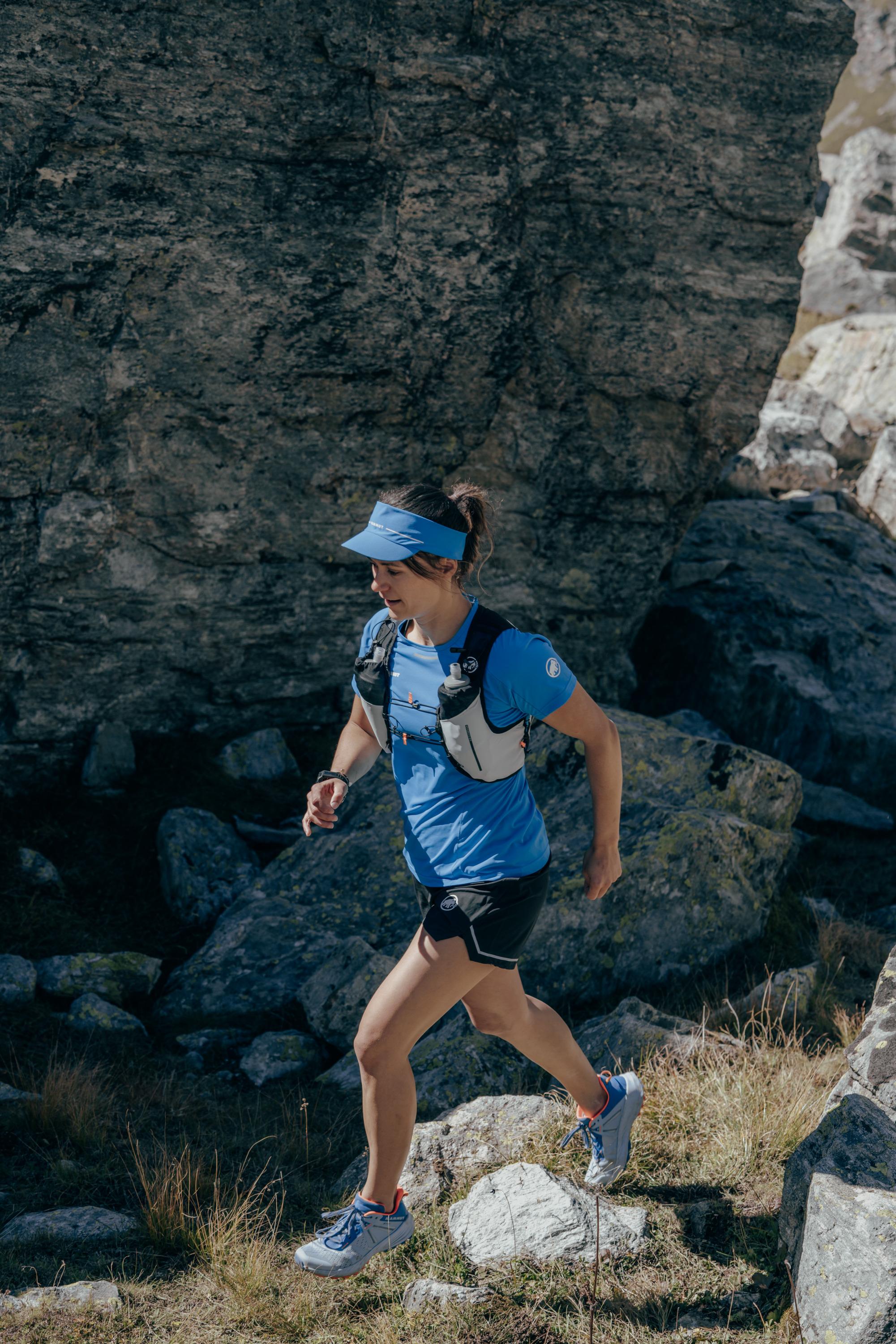
The right care – partners for longer
Your trail running shoes are much more than just equipment – they are loyal companions for every journey, wherever each path may take you. But as we all know, it’s not just the wild trails that will eventually wear them down. To make sure your trail running shoes will be your trusted partner for many years to come, the right care after every single run is essential.
First, shake them properly to get rid of all the dirt and dust. You may even have to treat them to a gentle shower. Just make sure you stay clear of the washing machine, which is as gentle on your shoes as a steep slope is on your knees.
When it comes to drying your shoes, they are just like you: They absolutely love fresh air. So drop them somewhere in the shade, far away from heaters or direct sunlight to avoid shrinking or deformation. And when it’s once again time to proof them so they are ready for puddles and rain, make sure to use special care products like coating sprays, wax or ecological impregnation agents. That way, your trail running shoes stay waterproof, while also keeping their breathability.
Additionally, it’s always good to keep an eye on the sole and seams to spot any signs of wear and tear as early as possible. Just like with the rope that keeps you safe while climbing, you definitely want to know as soon as possible when it’s time for a new pair. If you apply some tender, loving care, your trail running shoes will be ready to go whenever it’s time for a new adventure.
Can I use trail running shoes for hiking?
Trail running shoes are versatile enough to feel right at home on speedy mountain runs as well as during a relaxed hike. Because they are so lightweight and flexible, there are numerous benefits to wearing them when you’re hitting your next hiking trail. Their great traction allows you to confidently navigate all kinds of terrain, while their breathability makes them the perfect choice on warm days. However, most trail running shoes don’t offer as much stability and protection for your ankles as regular hiking boots or mountaineering boots would, making them less suitable for extended hikes or more challenging terrain. So when you’re planning a relaxed hike or want to tackle a short, speedy tour, trail running shoes are the perfect choice. For more demanding or longer treks involving heavy backpacks, sturdy hiking boots may be better suited.
What’s the difference between trail running shoes and regular running shoes?
Trail running shoes are true allrounders when it comes to running. They are great for jogging when your route takes you across various types of terrain and along uneven trails far off the beaten concrete path. With a sole that feels like a mountain bike tire, plus the extra layer of protection and stability, they are your ideal companions for conquering the great outdoors.
At the other end of the spectrum, regular running shoes are more like sleek city runners, made for life on smooth asphalt. As they are much more lightweight and lithe, they are perfect for quick runs on hard, solid ground. Their tread is comparable to that of a racing bike tire – made for maximum efficiency and speed on even tracks.
Now that you’ve got all the information you need, there’s nothing standing in between you and your next trail running adventure. Just remember that each and every terrain comes with its own challenges, so you should always choose your shoes accordingly. With the right trail running gear , the right preparation and the courage to venture off the beaten path, you’re all set to enjoy everything the great outdoors has to offer. 3, 2, 1… GO!
